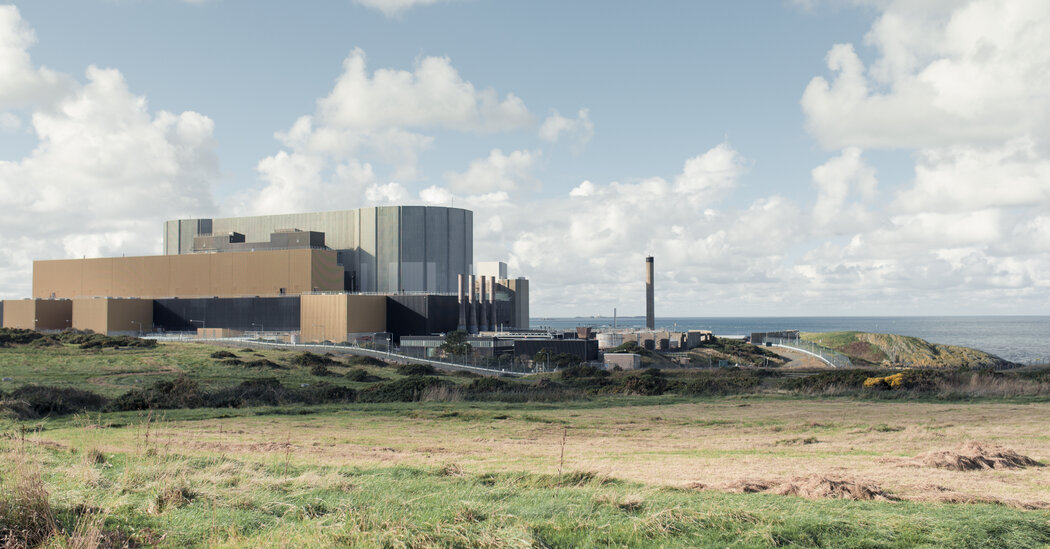
Britain will back a modular nuclear power station for Anglesey Island in northern Wales, ending years of uncertainty over the fate of what is considered the country’s best nuclear site.
The decision, which was announced Thursday morning in London, appears to be an effort to create a British nuclear champion and a move to increase the government’s role in the economy, especially the energy sector.
The Wales plant would also be the first of this type of nuclear plant to be built in Britain. Modular designs are promoted as cheaper and quicker to construct.
Rolls-Royce SMR, an affiliate of the jet engine maker that is one of Britain’s few remaining large industrial companies, will design the power station at Wylfa, a rocky headland on the island that overlooks the Irish Sea.
Rolls-Royce is trying to parlay its experience designing and building the reactors for Britain’s nuclear submarines into a new business line. It has brought in investors, including the Qatar Investment Authority, the Persian Gulf emirate’s sovereign wealth fund; Constellation, an American utility; and CEZ, the Czech Republic’s power company.
The Wales plant will consist of three units, known as small modular reactors, or SMRs, whose power output will add up to a little less than half that of one of the current generation of giant power stations.
These “mini-nuclear reactors are smaller and quicker to build” than some larger ones, the government said in a news release. The plan is to lower costs through assembling modules from components in factories and then setting them up on site.
The government is betting that these smaller reactors will give Britain a technology with low carbon emissions and “global export opportunities.” It has pledged 2.5 billion pounds ($3.3 billion) for preliminary work on the site and other preparation. The additional cost of completing the plant may be financed through charges on electric bills, a strategy the government is using to draw investors to another plant being built in Eastern England called Sizewell C.
The government said that the plant would support 3,000 local jobs and power three million homes. By comparison, Sizewell C is projected to create 8,000 jobs at peak construction and light six million homes.
The government, though, is taking something of a gamble. Small modular reactors like the one proposed by Rolls-Royce are relatively new in the global nuclear industry. Such leadership could bring both advantages and unexpected problems.
Britain, which is trying to construct nuclear plants after a long hiatus, has already been badly burned by delays and cost overruns at a giant plant being built on the west coast of England at Hinkley Point.
In addition, some critics say that the government is making a mistake by not building a larger plant at Wylfa that would generate more electricity and create more jobs. The nuclear industry considers Wylfa the most advantageous of potential British sites because of its bedrock location and easy access to deep water for cooling.
In a statement on Wednesday, Unite, a large trade union, said that building the small modular plant at Wylfa was “a missed opportunity.”
The union said that although the smaller plant would provide “some employment opportunities,” those from a larger model would be “far greater.”
In addition, the choice is likely to disappoint Washington, an important ally, and the American nuclear industry, which has been courting Britain. The United States recently signed an ambitious nuclear cooperation deal with Britain.
In an article in The Telegraph newspaper in October, Warren Stephens, the U.S. ambassador to Britain, urged the government to designate Wylfa as the site for what he called a “gigawatt-scale nuclear project.” He also said that private investors were prepared “to fund the majority” of the facility.
The British government, though, is eager to move forward with small nuclear reactors and may have calculated that lining up an American giant would take years.
Keir Starmer, the prime minister, also probably wanted something to happen quickly at Wylfa, whose future has been in doubt since Hitachi walked away from building a power station there in 2019 after spending around £2 billion. A 1960s-era plant at Wylfa closed in 2015.
“It might simply be that Wylfa is the fastest site they can possibly bring online for SMRs, so they’ve gone for that, “ said Adam Bell, a former senior British energy official who is now director of policy at Stonehaven, a consulting firm.
Edward T. Jones, a senior lecturer in economics at Bangor University in North Wales, said that the local community, which was stunned by Hitachi’s departure, may not be prepared to cash in on the opportunities offered by the new plant. “They’ve been burnt once and don’t want to be burnt again,” he said.
Stanley Reed reports on energy, the environment and the Middle East for The Times from London. He has been a journalist for more than four decades.
The post Britain Gives Go-Ahead to Smaller Nuclear Reactor in Wales appeared first on New York Times.



